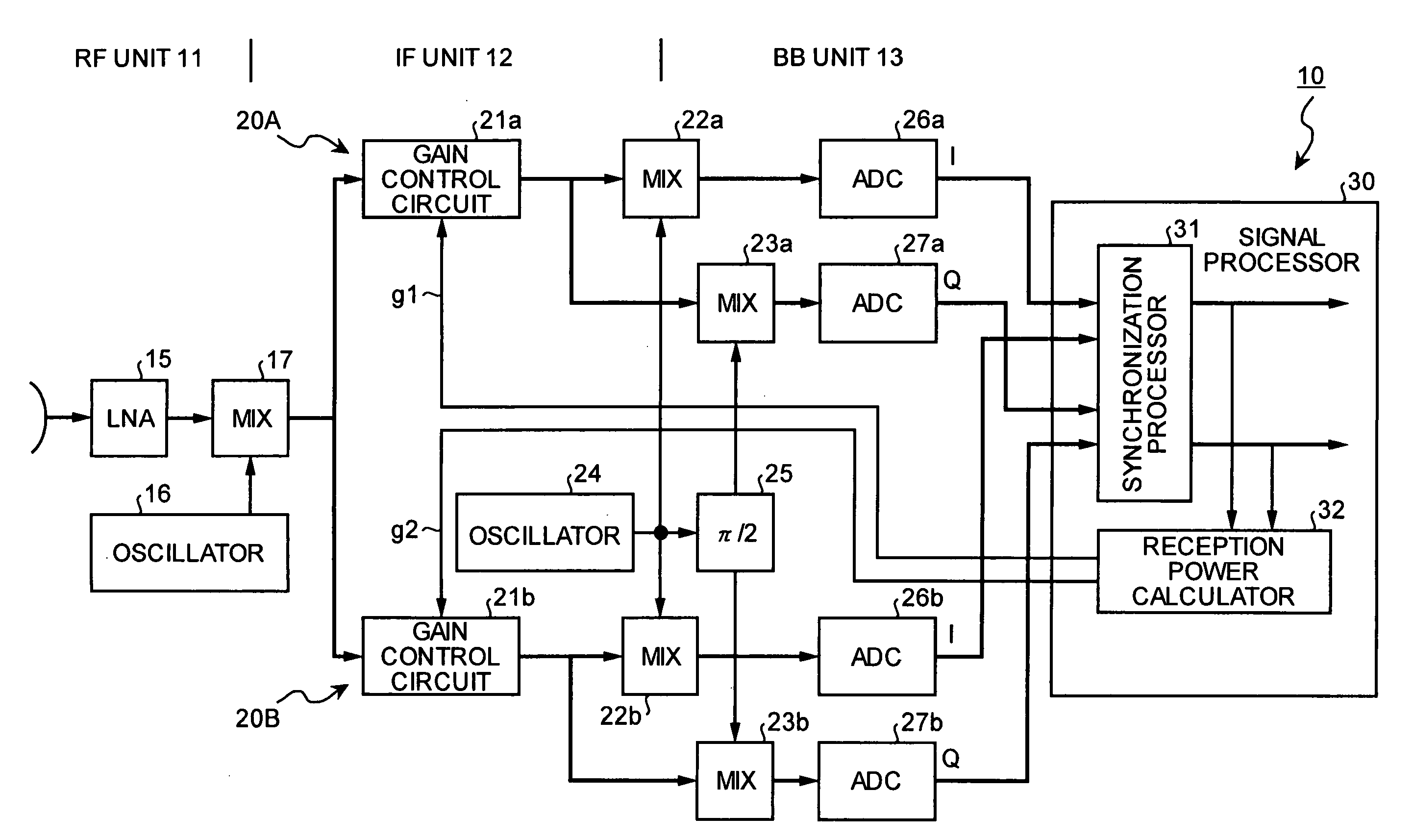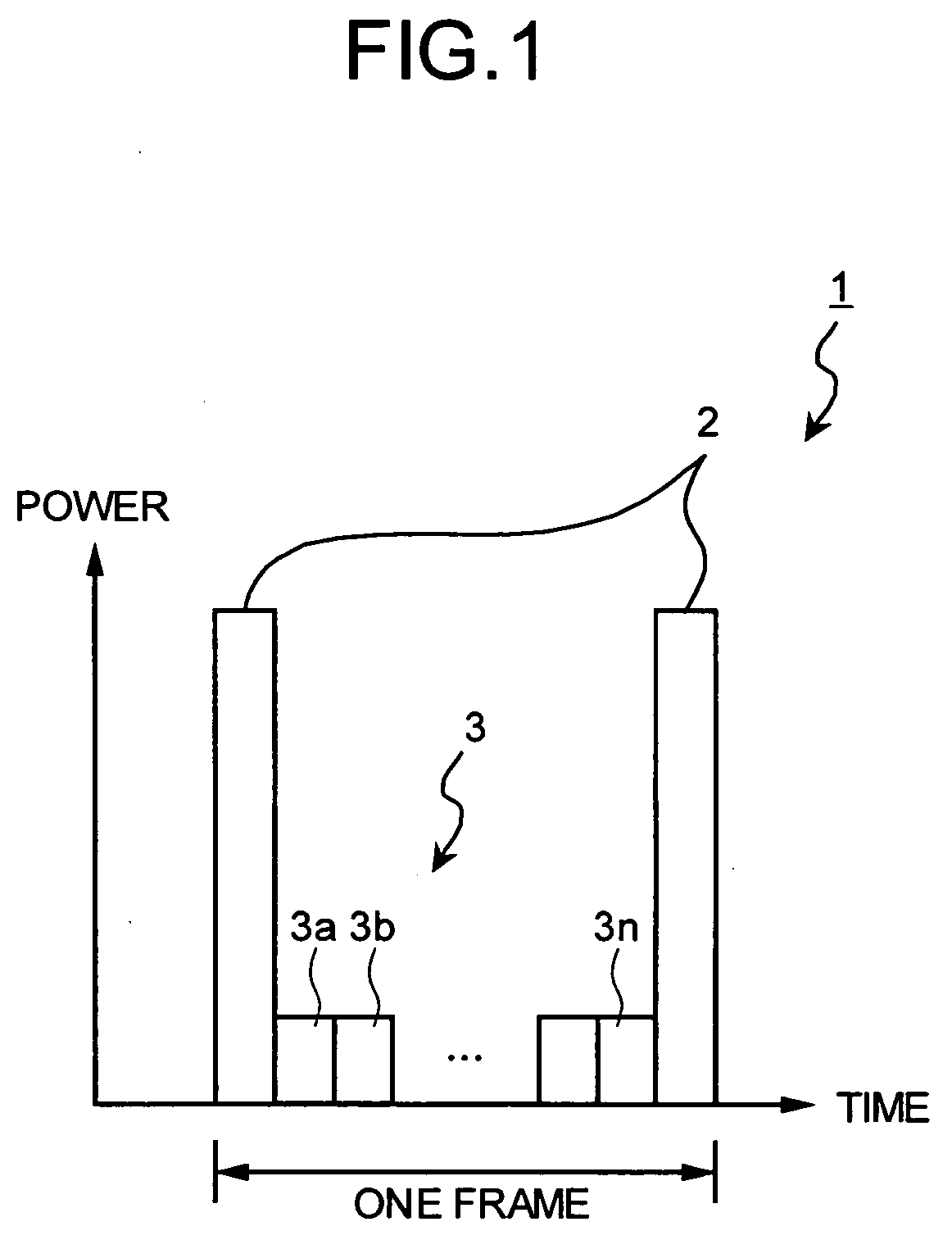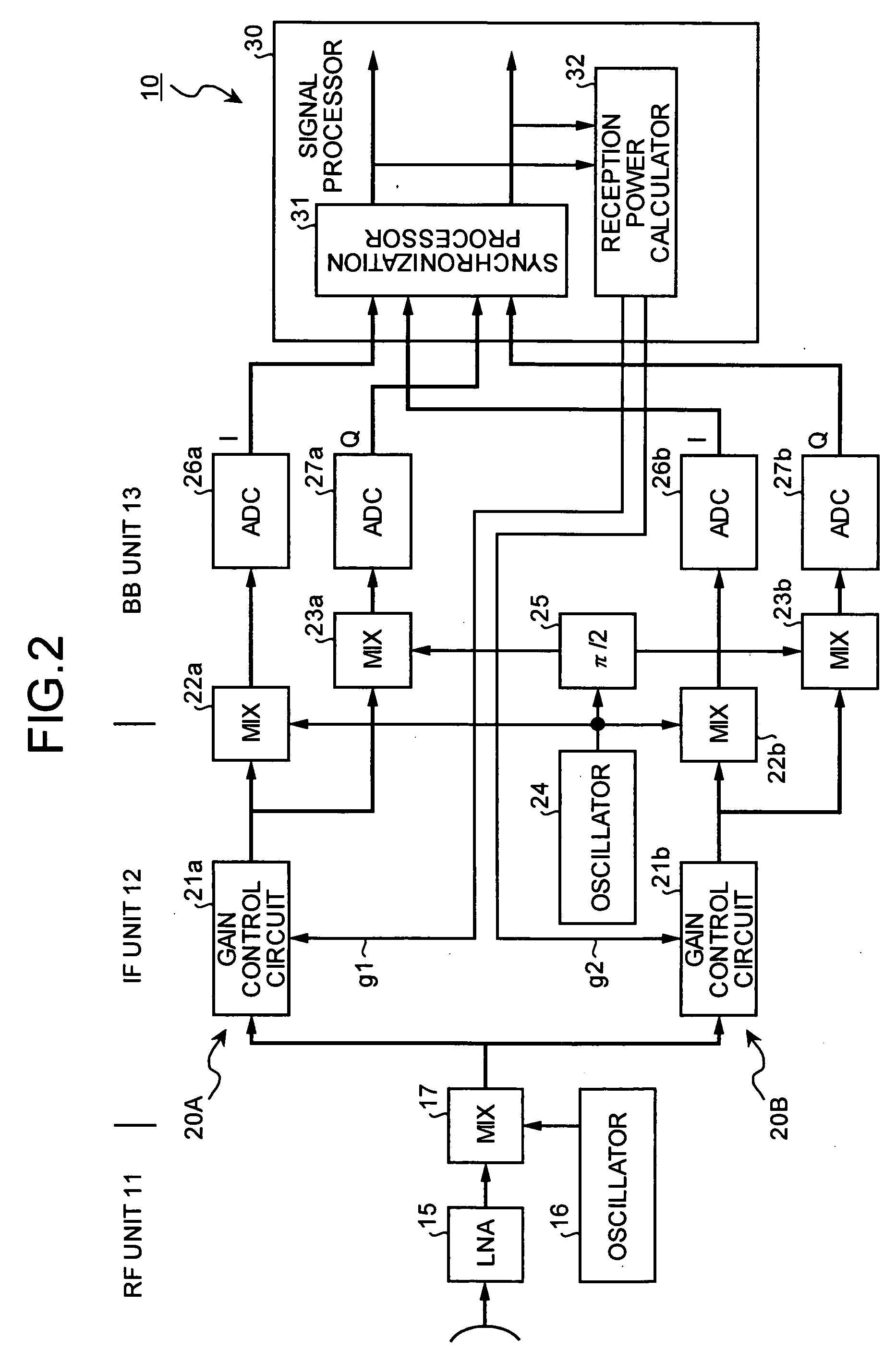Radio receiver and gain control method
a gain control and receiver technology, applied in the field of radio receivers, can solve the problems of deteriorating s/n ratio of input signals, signal distortion or clipping, and inability to perform appropriate agc control
- Summary
- Abstract
- Description
- Claims
- Application Information
AI Technical Summary
Benefits of technology
Problems solved by technology
Method used
Image
Examples
first embodiment
[0029]FIG. 2 is a block diagram of a radio receiver according to the present invention. As the radio receiver is, for example, a mobile station in a mobile communication system. A radio receiver 10 includes an RF unit 11 that handles high frequency band signals, an IF unit 12 that handles medium frequency band signals, and a BB unit 13 that handles base-band signals. In the RF unit 11, high frequency band input signals go through a low noise amplifier (LNA) 15, and are mixed with a signal from an oscillator 16 by a mixer (MIX) 17, thereby being converted to IF frequency band signals.
[0030] The signal input to the IF unit 12 is branched into two to be input to gain control circuits 21 (21a and 21b) of the respective systems. The signal is by simply branched into two while maintaining the frame configuration. One of the branched systems is a gain control system 20A for the common pilot signal 2 and the other is a gain control system 20B for the individual data signal 3. These gain con...
second embodiment
[0060] when a frame is received, in which the common pilot signal and data signals of one or a plurality of users are arranged in a time-sharing manner in a unit of time slot, appropriate gain control is performed respectively for each time slot having received these common pilot signals and data signals. Accordingly, even if there is a difference in the power of the common pilot signal and the data signal in each time slot, the common pilot signal and the data signal can be received, with a wide dynamic range being ensured, thereby preventing signal deterioration and improving the reception quality.
[0061] The received frame format in the first and the second embodiments is not limited to the frame configuration described above (see FIG. 1), and can be applied to other frame formats.
[0062]FIG. 9 depicts another frame format of the radio signal to be received by the radio receiver according to embodiments of the present invention. Time is plotted on the horizontal axis and power is...
PUM
 Login to View More
Login to View More Abstract
Description
Claims
Application Information
 Login to View More
Login to View More - R&D
- Intellectual Property
- Life Sciences
- Materials
- Tech Scout
- Unparalleled Data Quality
- Higher Quality Content
- 60% Fewer Hallucinations
Browse by: Latest US Patents, China's latest patents, Technical Efficacy Thesaurus, Application Domain, Technology Topic, Popular Technical Reports.
© 2025 PatSnap. All rights reserved.Legal|Privacy policy|Modern Slavery Act Transparency Statement|Sitemap|About US| Contact US: help@patsnap.com



